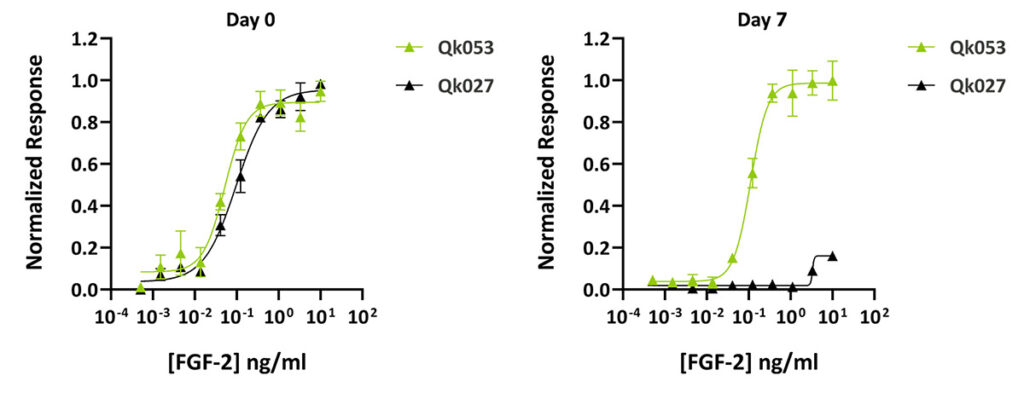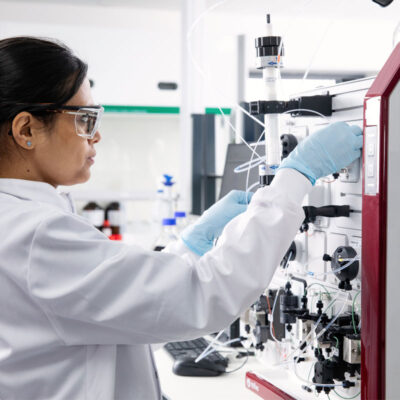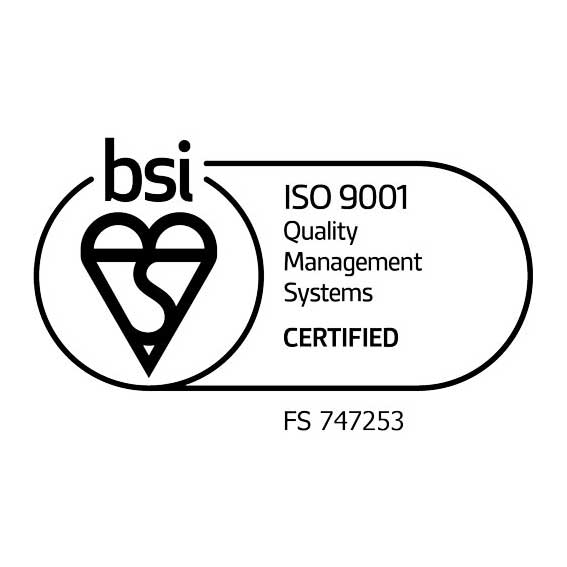Technote | FGF-2 (Qk053Qk027Qk502)
Thermostable FGF2-G3 protein remains stable and highly bioactive in culture media for 7 days
Fibroblast growth factor 2 (FGF-2) is an essential growth factor for regulating several biological processes and a critical component for stem cell maintenance in feeder-free media. Qkine FGF2-G3 (Qk053) was engineered with nine amino acid substitutions to stabilize its structure and expressed in E. coli creating the only animal-free, protein-tag-free stabilized FGF2-G3 available commercially. The enhanced stability makes FGF2-G3 a highly bioactive and thermostable (heat stable) engineered form of FGF-2, resulting in improved culture conditions with less frequent media changes.
FGF2-G3 stability and bioactivity

FGF2-G3 (Qk053) and WT FGF-2 (Qk027) bioactivity were compared and determined using the Promega serum response element luciferase reporter assay in transfected HEK293T cells. Cells were treated in triplicate with a serial dilution of FGF2-G3 154 aa (Qk053, green) or WT FGF-2 154 aa (Qk027, black) for 3 hours. Firefly luciferase activity was measured at days 0 and 7 and normalized to the control Renilla luciferase activity.
FGF2-G3 provides a reliable source of animal-free, highly bioactive, and thermostable FGF-2 for stem cell culture and FGF2-dependent applications. The use of stable FGF2-G3 results in enhanced stem cell cultures with less frequent media changes improving self-renewal maintenance and enhancing the reproducibility of subsequent differentiation the reproducibility of subsequent differentiation regenerative medicine applications.
Download PDFAll our recombinant proteins are animal-free and come with Bioactivity. Guaranteed.
About our products

Nine-point Quality Commitment
Qkine is committed to manufacturing bioactive proteins of the highest quality to enhance scientific outcomes and improve reproducibility.

Quality policy
Learn more about our quality management system implemented to comply with the requirements of ISO 9001: 2015.

Animal-free
Qkine manufactures recombinant proteins in a dedicated animal-free laboratory located in an ISO 9001: 2015 certified facility.
Contact us
Our science team is here to help, please contact us if you have any questions.